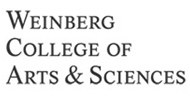Team:Northwestern/Project/Description
From 2011.igem.org
Helenmelon (Talk | contribs) |
|||
| Line 14: | Line 14: | ||
| - | Virulence factors produced by Pseudomonas aeruginosa are controlled by a natural regulatory, hierarchical network consisting of two main systems: the las system and the rhl system. The main components of these systems are the receptor proteins lasR and rhlR, and the autoinducers 3-oxo-C12-HSL (PAI-1) and C4-HSL (PAI-2). Upon binding to the induced promoters LasP and RhlP, the LasR/PAI-1 and RhlR/PAI-2 dimers act as transcriptional regulators that enhance the expression of the proceeding genetic sequence. This transcriptional regulatory mechanism, which known specifically to respond to cell density (via autoinducer/R-proteins) will be employed in our construct for Pseudomonas aeruginosa detection. | + | Virulence factors produced by ''Pseudomonas aeruginosa'' are controlled by a natural regulatory, hierarchical network consisting of two main systems: the las system and the rhl system. The main components of these systems are the receptor proteins lasR and rhlR, and the autoinducers 3-oxo-C12-HSL (PAI-1) and C4-HSL (PAI-2). Upon binding to the induced promoters LasP and RhlP, the LasR/PAI-1 and RhlR/PAI-2 dimers act as transcriptional regulators that enhance the expression of the proceeding genetic sequence. This transcriptional regulatory mechanism, which known specifically to respond to cell density (via autoinducer/R-proteins) will be employed in our construct for ''Pseudomonas aeruginosa'' detection. |
| Line 20: | Line 20: | ||
| - | There are three vital components to our construct, the autoinducer, the receptor protein, and the reporter. The autoinducer will be supplied by P. aeruginosa, which needs to be detected by the system. The receptor proteins need to be produced by the E. coli. Finally, the reporting sequence has to be paired to the induced promoters (autoinducer/r-protein specific). The three components are depicted below in Figure 1. | + | There are three vital components to our construct, the autoinducer, the receptor protein, and the reporter. The autoinducer will be supplied by ''P. aeruginosa'', which needs to be detected by the system. The receptor proteins need to be produced by the E. coli. Finally, the reporting sequence has to be paired to the induced promoters (autoinducer/r-protein specific). The three components are depicted below in Figure 1. |
| Line 32: | Line 32: | ||
| - | When combined, the three components of the system facilitate the detection of P. aeruginosa as depicted in Figure 2. The autoinducers directly influence the level of reporter expression; however, they are traditionally produced at basal levels by P. aeruginosa which would take a while to detect. Therefore, to enhance the sensitivity of the construct to the autoinducers, the R-protein synthase sequence is coupled with a constitutive promoter. Constitutive expression of the R-protein synthase will eventually saturate the cell, and enhance the detection of P. aeruginosa. The induced promoter and reporter sequence is designed upstream of the constitutive promoter and R-protein synthase construct. | + | When combined, the three components of the system facilitate the detection of ''P. aeruginosa'' as depicted in Figure 2. The autoinducers directly influence the level of reporter expression; however, they are traditionally produced at basal levels by ''P. aeruginosa'' which would take a while to detect. Therefore, to enhance the sensitivity of the construct to the autoinducers, the R-protein synthase sequence is coupled with a constitutive promoter. Constitutive expression of the R-protein synthase will eventually saturate the cell, and enhance the detection of ''P. aeruginosa''. The induced promoter and reporter sequence is designed upstream of the constitutive promoter and R-protein synthase construct. |
Revision as of 06:22, 27 September 2011
PROJECT

RESULTS

CONSIDERATIONS

ABOUT US

NOTEBOOK

ATTRIBUTIONS


Virulence factors produced by Pseudomonas aeruginosa are controlled by a natural regulatory, hierarchical network consisting of two main systems: the las system and the rhl system. The main components of these systems are the receptor proteins lasR and rhlR, and the autoinducers 3-oxo-C12-HSL (PAI-1) and C4-HSL (PAI-2). Upon binding to the induced promoters LasP and RhlP, the LasR/PAI-1 and RhlR/PAI-2 dimers act as transcriptional regulators that enhance the expression of the proceeding genetic sequence. This transcriptional regulatory mechanism, which known specifically to respond to cell density (via autoinducer/R-proteins) will be employed in our construct for Pseudomonas aeruginosa detection.
There are three vital components to our construct, the autoinducer, the receptor protein, and the reporter. The autoinducer will be supplied by P. aeruginosa, which needs to be detected by the system. The receptor proteins need to be produced by the E. coli. Finally, the reporting sequence has to be paired to the induced promoters (autoinducer/r-protein specific). The three components are depicted below in Figure 1.
 |
When combined, the three components of the system facilitate the detection of P. aeruginosa as depicted in Figure 2. The autoinducers directly influence the level of reporter expression; however, they are traditionally produced at basal levels by P. aeruginosa which would take a while to detect. Therefore, to enhance the sensitivity of the construct to the autoinducers, the R-protein synthase sequence is coupled with a constitutive promoter. Constitutive expression of the R-protein synthase will eventually saturate the cell, and enhance the detection of P. aeruginosa. The induced promoter and reporter sequence is designed upstream of the constitutive promoter and R-protein synthase construct.
 |
 "
"




